Lice Vs Dandruff: Complete Guide To Differences & Care
Differentiate between the two conditions to know what is causing your itchy scalp.
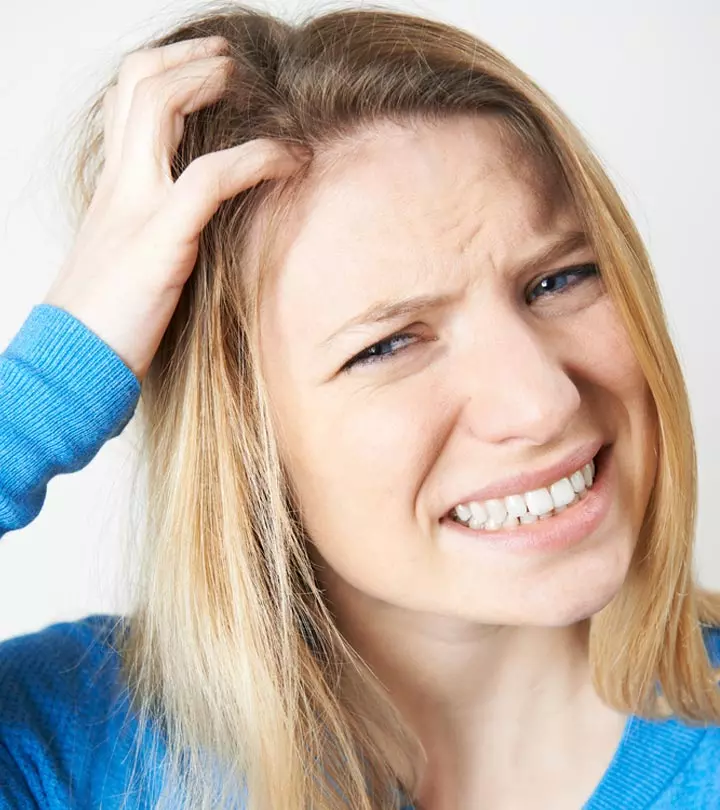
Image: Shutterstock
Many tend to mistake dandruff for lice and vice versa. This is because they are minute and almost look the same. So, what is the difference between lice and dandruff? While lice are tiny insects, dandruff is small flakes of dead skin. Lice can get transferred among people, so they are contagious. One in every two adults and up to 12 million children have dandruff and head lice, respectively (1), (2).
In this article, we will dig deeper into lice vs. dandruff, their causes, symptoms to look for, treatment options, and the best ways to prevent their recurrence. Take a look!
In This Article
Lice Vs. Dandruff – What Are The Differences?
Lice is quite different from dandruff. However, both cause scalp irritation. Following are the major differences between head lice and dandruff:
- What Is It: Head lice are a parasitic infestation of wingless insects or little bugs that feed on human blood. They lay eggs, called nits, which stick to the hair strands (3). They cause intense itching and scalp tickling.
Dandruff, or seborrheic dermatitis, is a common inflammatory skin condition that affects the scalp. It causes flaking, itching, and scalp aggravation (4). These flakes or white specks can form on both dry and oily scalps.
- Contagion: The hair parasites are contagious. They spread from human to human through hugging, using the same pillow or comb, or being in proximity.
Dandruff is not contagious.
- Location: Lice eggs stick to the hair shaft. The viable nits are about 6 mm close to the hair follicle.
Dandruff flakes are closer to the scalp and are loose and flaky. It does not stick to the hair strands unless you have an oily scalp or hair, leading to a flaky scalp.
- Shape: Lice nits are elongated and oval-shaped. They are brown to black.
Dandruff comprises irregular-shaped white/yellowish flakes of skin. These flakes could be small or big.
- Growth: Lice suck on human blood and grow into adult lice quite rapidly if not treated. The eggs take a week to hatch. The hatched lice then suck on the blood to become adults. Lice infestation of the body is known as pediculosis.
 Did You Know?
Did You Know?Dandruff spreads on the scalp and leads to a concentrated appearance of flakes of skin throughout the head.
The following comparison pictures can help you understand better.
Key Takeaways
- Lice are parasitic insects, whereas dandruff is a layer of dead skin – and they both cause scalp irritation and itchiness.
- The transmission of head lice usually occurs through personal contact, whereas dandruff may occur for many reasons.
- Lice can be characterized by oval-shaped, yellowish-white specks in your hair or itchiness that does not subside even after washing your hair.
- Follow a good hair care regimen along with medicated shampoos to effectively get rid of lice or dandruff.
Lice And Dandruff – In Pictures
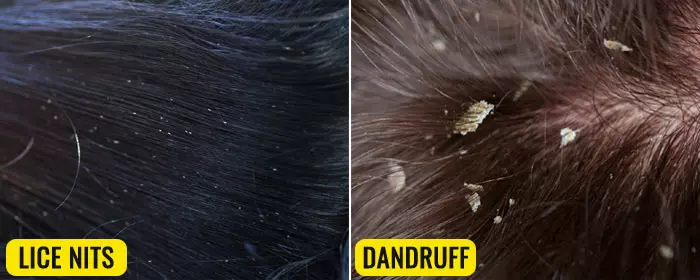

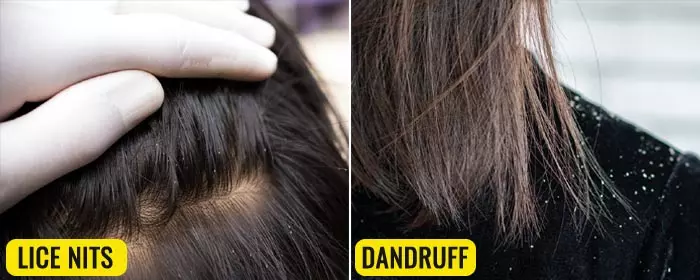
So you see, both lice and dandruff are essentially scalp problems, but they manifest and impact your life differently. But what causes lice or dandruff? Let us understand the same in the following sections.
What Causes Lice?
Head lice infestation usually spreads through personal contact. Head-to-head contact or using the hats, scarves, and caps of an individual with this parasitic infestation can cause head lice. The transfer of one female parasite is enough to cause a full-blown scalp infestation within a week or two. Poor hygiene also may cause lice. Animals are not prone to lice, so you cannot get affected by your household pets or strays.
Risk Factors: Girls and women generally tend to have longer hair. Hence, they are at a higher risk of contracting head lice than males.
 Quick Tip
Quick TipWhat Causes Dandruff?
Many factors can cause dandruff. They include:
- An extremely dry/oily scalp(4).
- An increase in the Malassezia fungus that naturally occurs on the scalp (4).
- Extreme weather conditions (4).
- Certain hair products and exposure to chemicals (4).
- Dandruff medications, such as ketoconazole.
- Stress and fatigue (4).
Risk Factors:
Dandruff is more common in men as they have larger sebaceous (oil-producing) glands on their scalp. An unhealthy diet and nutrient deficiencies may also cause dandruff in both men and women.
 Did You Know?
Did You Know?Symptoms: How To Tell If You Have Lice Or Dandruff?
- Flakes: If you have white flakes all over your shoulders and clothes, you have dandruff.
- White Specks: Inspect your hair strands closely. Elongated, oval-shaped, yellowish-white specks on your hair are lice nits.
- Pull Test: If you have to pinch the white specks and pull them hard to remove them, they are lice nits.
- Itchy Scalp: Does your head itch constantly? The irritation coming from a lice infestation is often way more intense than that caused by dandruff. The insects’ saliva irritates the scalp and results in severe itching. Dandruff over an oily scalp can suffocate it. Your nails will come away with grime under them whenever you scratch. Dandruff on a dry scalp produces scaly flakes.
- Wash Test: If washing your hair reduces scalp irritation, you have dandruff.
- Comb Test: Comb your hair with a lice comb. Start from the nape of your neck and towards the front. Examine your comb after every stroke. If there are nits or lice in your hair, they will be caught in your comb.
You may also consider the following tips:
- Get A Friend Or A Family Member To Help: Another person will have a better view of your scalp than you do. Get a family member or a friend to examine your scalp in certain sections to determine whether you have lice or dandruff. Ask them to focus on the hairlines and the nape and ear areas.
- Get A Professional Screening Done: You may also consult a professional screener. Get an appointment at your nearest lice treatment salon to get a screening done.
Merely knowing if you have lice or dandruff is not enough. You must take immediate steps to treat the condition. Scroll down to know more.
Treatment For Dandruff
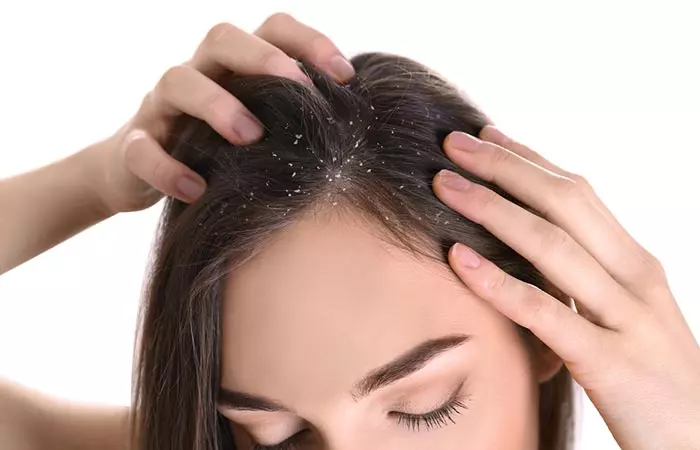
Here are some methods that explain how to get rid of dandruff.
- Medicated Shampoo: Use a medicated shampoo to treat dandruff. These shampoos contain ketoconazole and selenium sulfide. Leave in the shampoo for about 5-10 minutes before rinsing. Shampoo your hair 2-3 times a week. Talk to a dermatologist to know which dandruff shampoo to use for scalp treatment.
- Tea Tree Oil: Using tea tree oil for dandruff can be beneficial as it has anti-fungal and anti-bacterial properties. Add 10 drops of tea tree oil to a 250 ml bottle of a mild sulfate-free shampoo. Gently massage the scalp and leave the shampoo in for 15 minutes. Do this 2 to 3 times a week.
- Revise Your Diet: A poor diet that doesn’t provide necessary vitamins and minerals can contribute to dandruff. Research indicates that diets high in fat and sugar are linked to more dandruff compared to those rich in fruits (5). Therefore, it’s important to eat a balanced diet with essential nutrients, proteins, and minerals to promote healthy hair and scalp.
Note:
Some people may have allergic reactions to tea tree oil. Do a patch test before using it.
A blogger shared her experience of using Listerine and olive oil to treat her daughter’s dandruff in her personal blog. She said, “I sprayed the mouthwash into her scalp and followed it up with a handful of olive oil to moisturize. After the two hours Kelly and I examined Darcy’s very pink and red scalp that was now devoid of any flaky remnants (i).”
Treatment For Lice
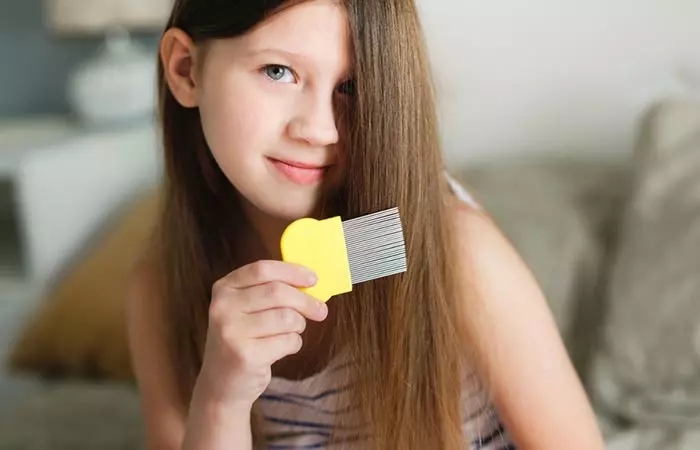
- Medicated Shampoo: Get a medicated shampoo for treating lice. Such a shampoo contains pyrethrinsi A group of naturally occurring chemical compounds with strong insecticidal properties that target insects' nerve systems. /piperonyl butoxide. Apply it every alternate day and leave it on for 20 minutes. Wash off and apply a conditioner to retain your hair luster.
- Lice Kit: These kits come with anti-lice oil, shampoo, a conditioner, and an aerosol spray. These also contain pyrethrins/piperonyl butoxide, phenothrini A non-corrosive, yellow-brown to pale yellow synthetic liquid that is used to kill insects like ticks and fleas. , permethrini An insecticide and drug used to treat lice and scabies. Usually available in cream or spray form. . Apply the oil or spray it to the scalp. Clip your hair up and cover with a shower cap. After 30 minutes, wash off with a lice shampoo. Use the conditioner.
- Lice Comb: Comb your hair with a lice comb 3 to 5 times a day to weed out as many lice as possible. Use it after you shampoo your hair as well. However, note that you will not be able to get rid of the lice eggs or nits with a comb.
- Lice Treatment Center: Lice treatment centers help treat lice.
Post treatment, it is important to prevent the recurrence of lice or dandruff. Take a look at the following section.
How To Prevent Dandruff And Lice From Recurring?
- Wash your hair at least twice a week.
- Change your pillow cover once a week.
- Wash pillow covers, hats, and combs regularly.
- Avoid using someone else’s comb, pillow, scarf, or hat.
- If you have dandruff, apply coconut oil or shampoo mixed with tea tree oil.
- Keep your hair tied while traveling in public transportation.
When To See A Doctor?
You may need to see a doctor if none of the above methods improve your scalp condition. If you have a sensitive scalp with constant irritation, you must immediately see a doctor. Head lice or dandruff can also weaken the hair roots and lead to hair loss or dull hair.
Infographic: What’s The Difference Between Lice And Dandruff?
If you read the above article but are still finding it tough to remember the differences that distinguish dandruff from a lice infestation, worry not. Scroll down and check out the infographic below to learn the basic differences that set apart these two scalp issues.
Some thing wrong with infographic shortcode. please verify shortcode syntaxDistinguishing between lice vs. dandruff is not as hard as most people think. Having lice is an infestation where blood-sucking creatures latch onto your hair, causing an itchy scalp. Dandruff, on the other hand, are small flakes of dead skin. In both conditions, it is common to find yourself scratching your scalp continuously. If left untreated, this constant scratching could lead to hair or scalp damage, leading to hair loss and scalp sensitivity. With lice, there is the added concern of spreading the infestation to other people, making it all the more important to get treatment quickly. Following a regular hair care regimen keeps your hair healthy and prevents recurrence.
Frequently Asked Questions
Can you feel lice crawling?
Yes, one can feel the lice crawling if there is a lice infestation. There will be a sensation of something moving or tickling on the head.
Do lice like dry scalp?
No. In fact, a dry scalp doesn’t support the growth of head lice.
Can you squish lice?
Although squishing lice is done by many, it is not a safe method as it may not be hygienic. One can instead use an anti-lice shampoo to kill the lice.
Do lice bites look like pimples?
No, lice bites may not look like pimples. They appear as small reddish or pink bumps.
Do dead lice fall out of hair?
Yes, dead lice and nits may fall out of hair after shampooing. Combing may also help in removing the dead lice.
Does braiding hair help prevent lice?
Yes, braiding, to a certain extent, may help prevent lice.
Does a conditioner suffocate lice?
Conditioner may not suffocate lice. However, it stuns the lice, which aids in their easy removal.
Does hot water cause dandruff?
Yes, hot water may cause dandruff. Washing the hair frequently with hot water may dry the scalp out and trigger dry skin dandruff.
Illustration: Lice Vs. Dandruff: Symptoms, Causes, Treatments, & Prevention
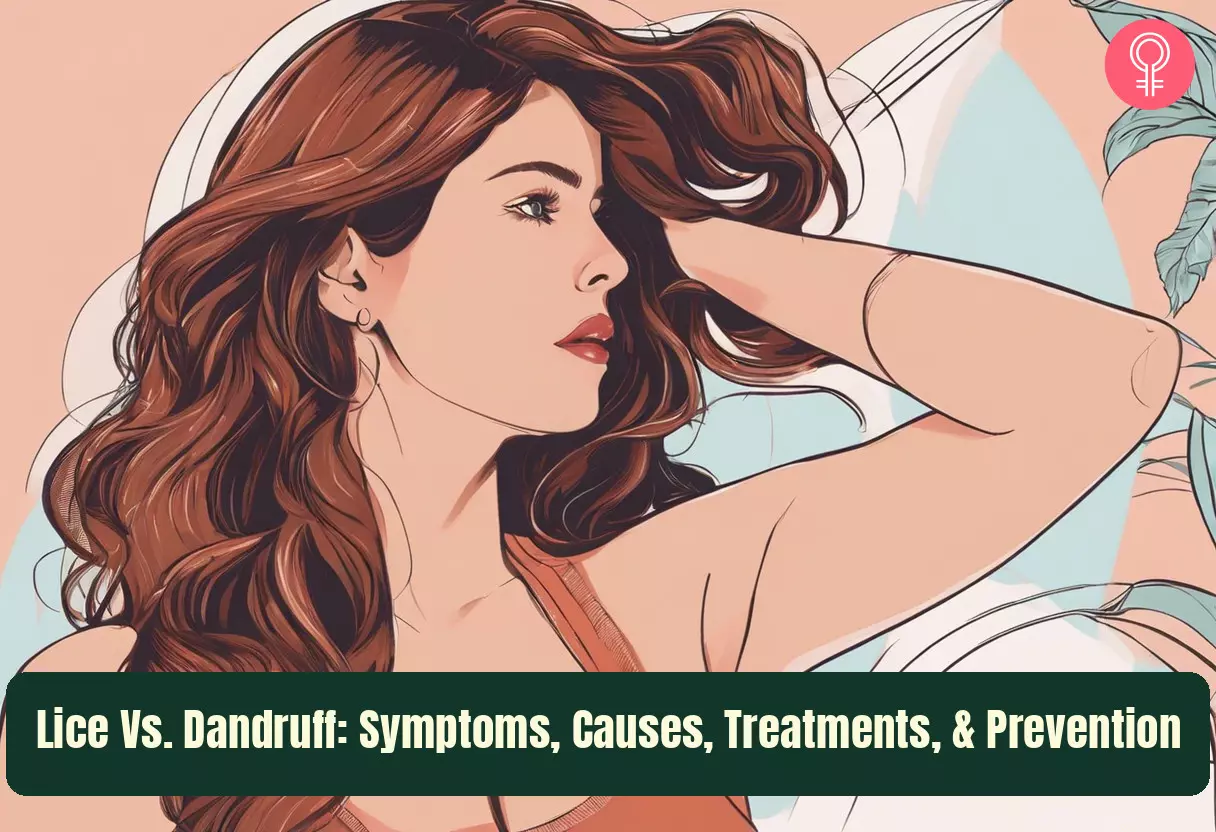
Image: Stable Diffusion/StyleCraze Design Team
Confused between head lice and dandruff? This informative video decodes the differences, offering expert insights, practical tips, and visual cues to help you accurately identify and tackle these common scalp concerns. Check it out.
Personal Experience: Source
StyleCraze's articles are interwoven with authentic personal narratives that provide depth and resonance to our content. Below are the sources of the personal accounts referenced in this article.
i. My first experience with invisible head licehttps://cmkerwin.blogspot.com/2012/03/my-first-experience-with-invisible-head.html
References
Articles on StyleCraze are backed by verified information from peer-reviewed and academic research papers, reputed organizations, research institutions, and medical associations to ensure accuracy and relevance. Read our editorial policy to learn more.
- About Head Lice
https://www.cdc.gov/lice/about/head-lice.html. - Seborrheic Dermatitis and Dandruff: A Comprehensive Review.
https://www.ncbi.nlm.nih.gov/pmc/articles/PMC4852869/ - Head lice: Overview.
https://www.ncbi.nlm.nih.gov/books/NBK279329/ - DANDRUFF: THE MOST COMMERCIALLY EXPLOITED SKIN DISEASE.
https://www.ncbi.nlm.nih.gov/pmc/articles/PMC2887514/ - Association between Diet and Seborrheic Dermatitis: A Cross-Sectional Study
https://www.sciencedirect.com/science/article/pii/S0022202X18324801
Read full bio of Dr. Jyoti Gupta
Read full bio of Anjali Sayee
Read full bio of Eshna Das
Read full bio of Krati Darak






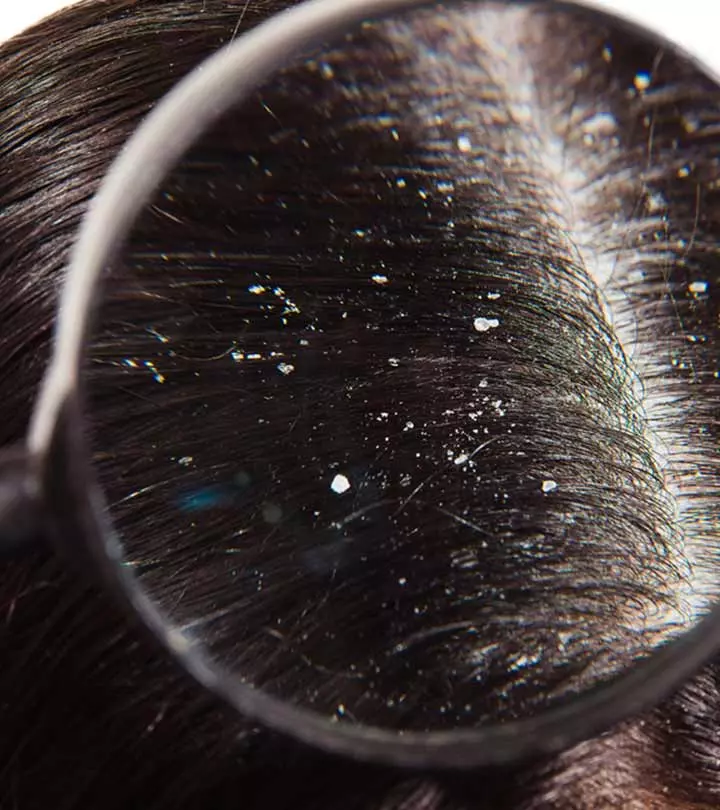
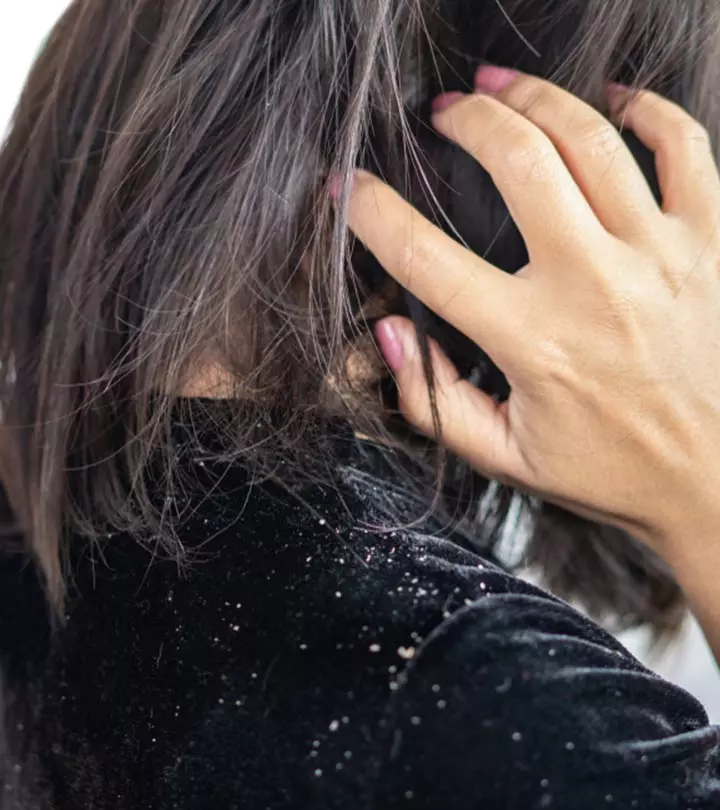
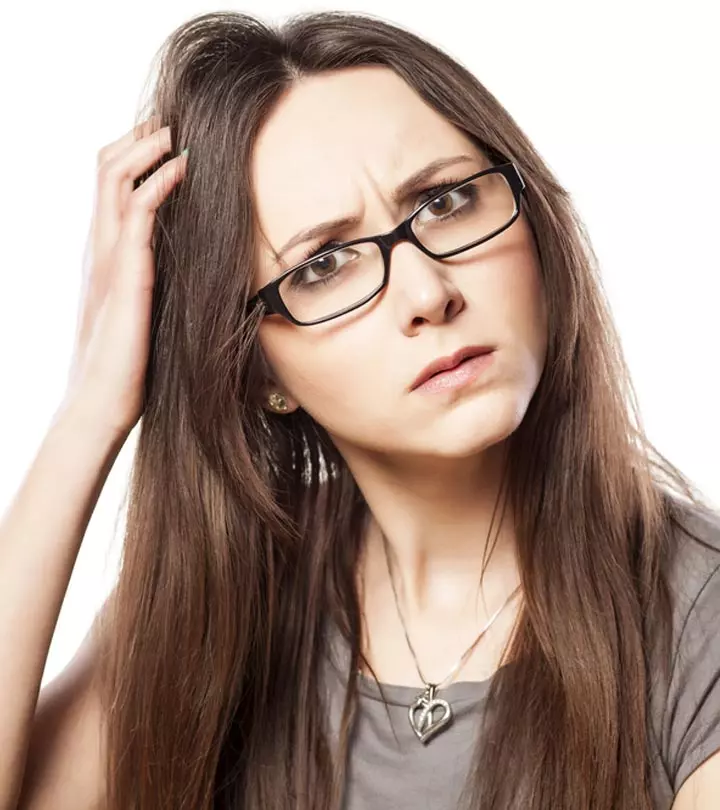
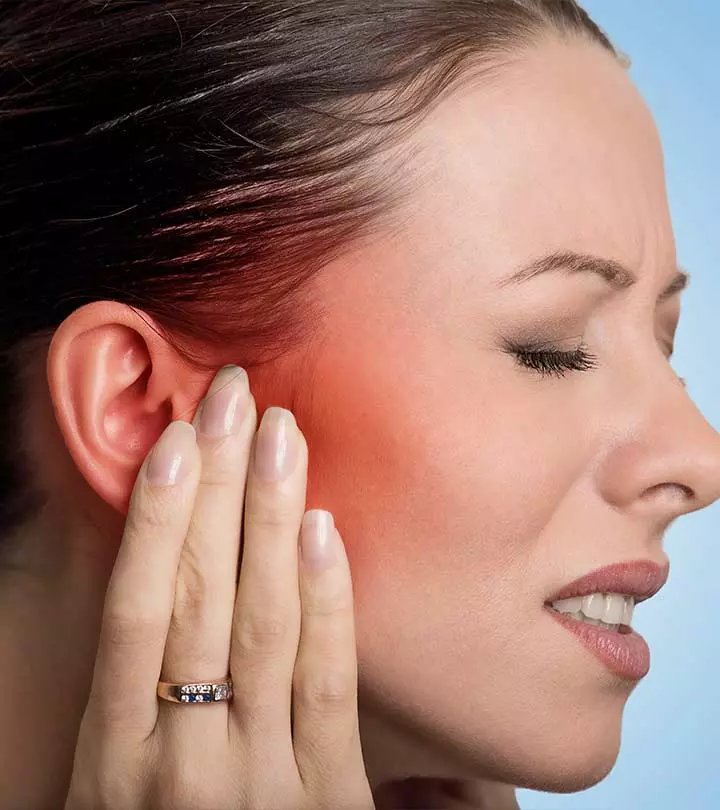
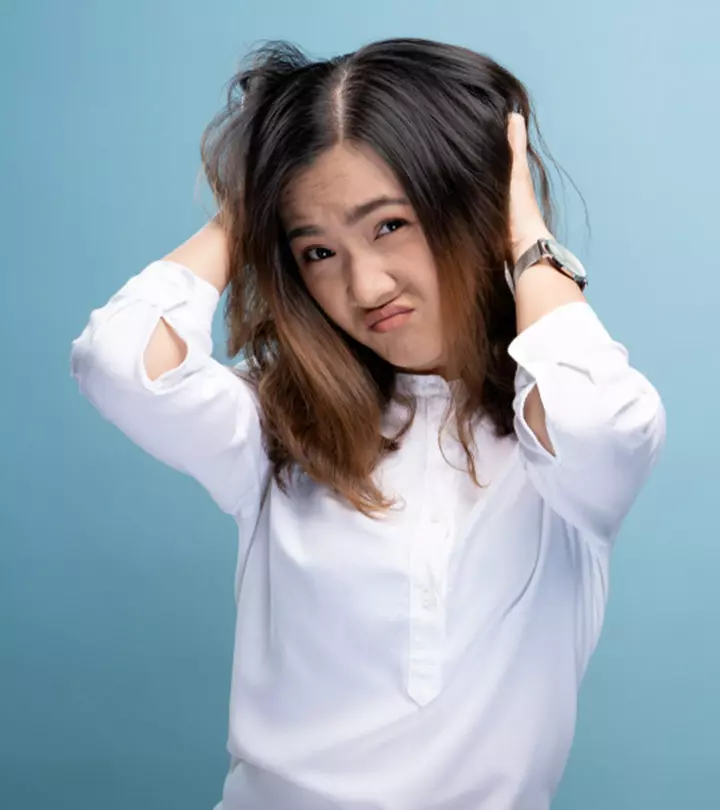
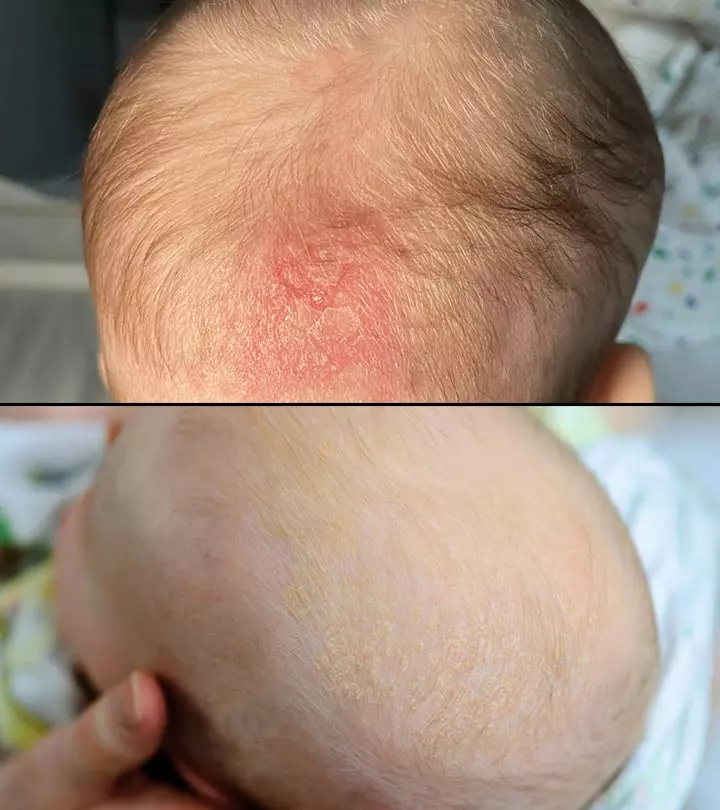

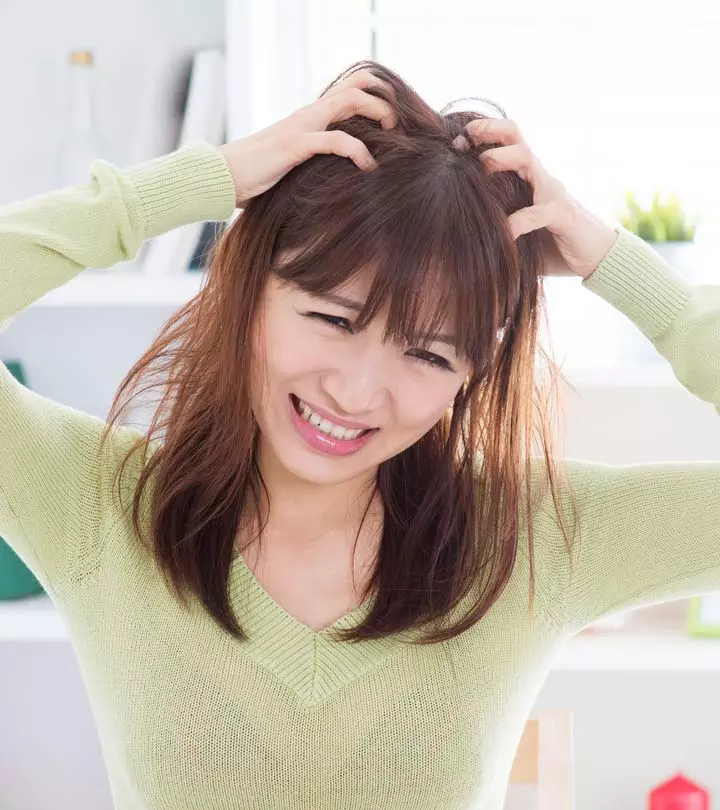
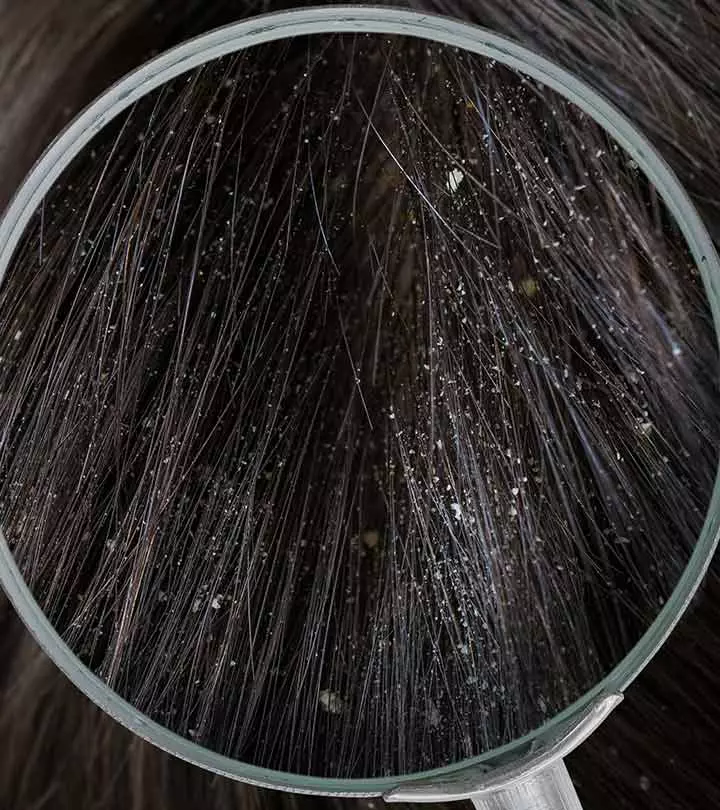
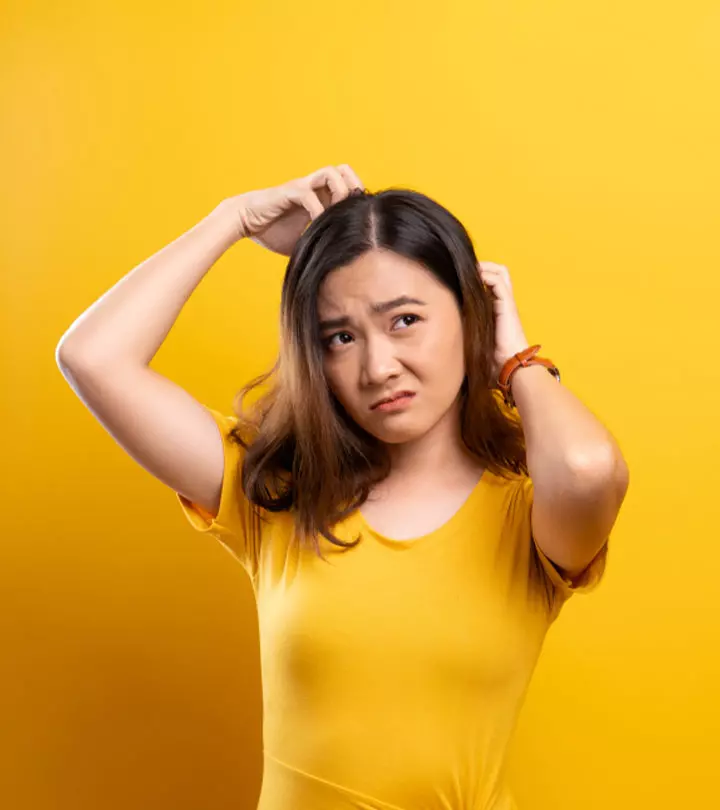
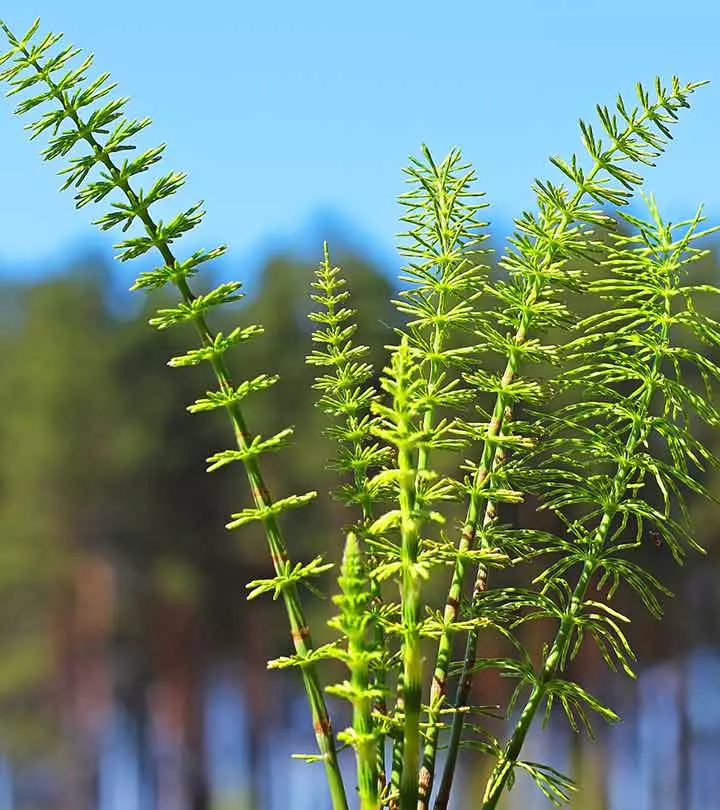
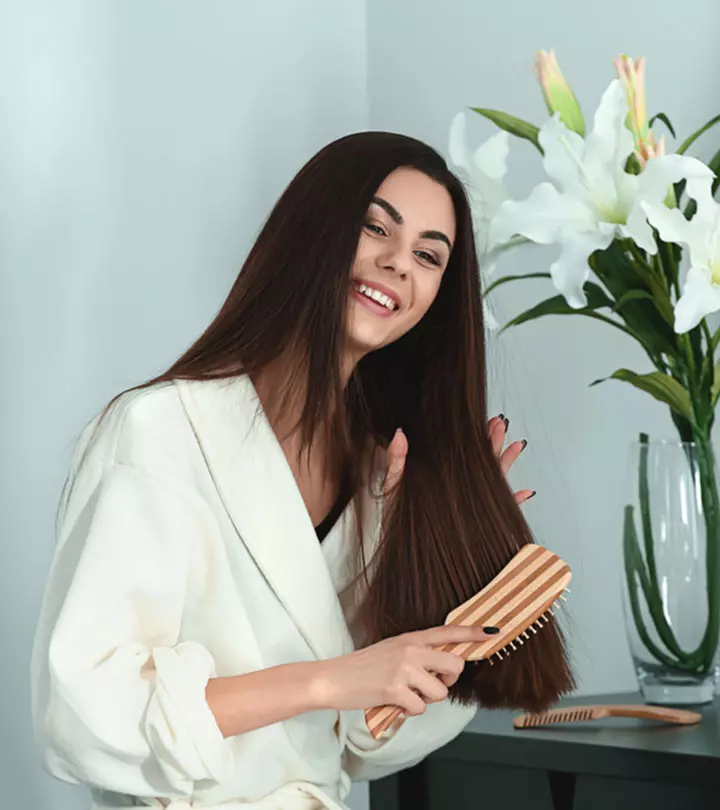
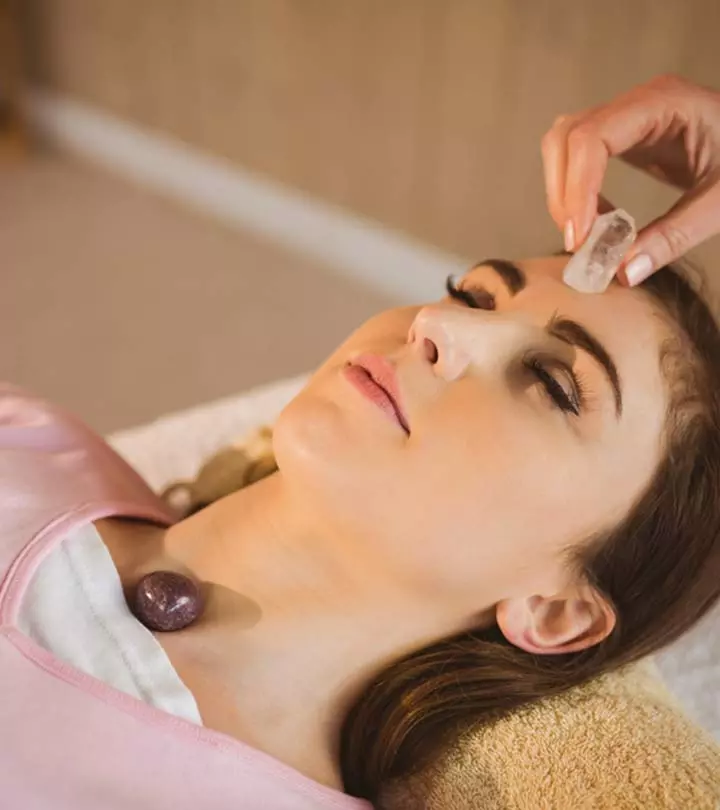

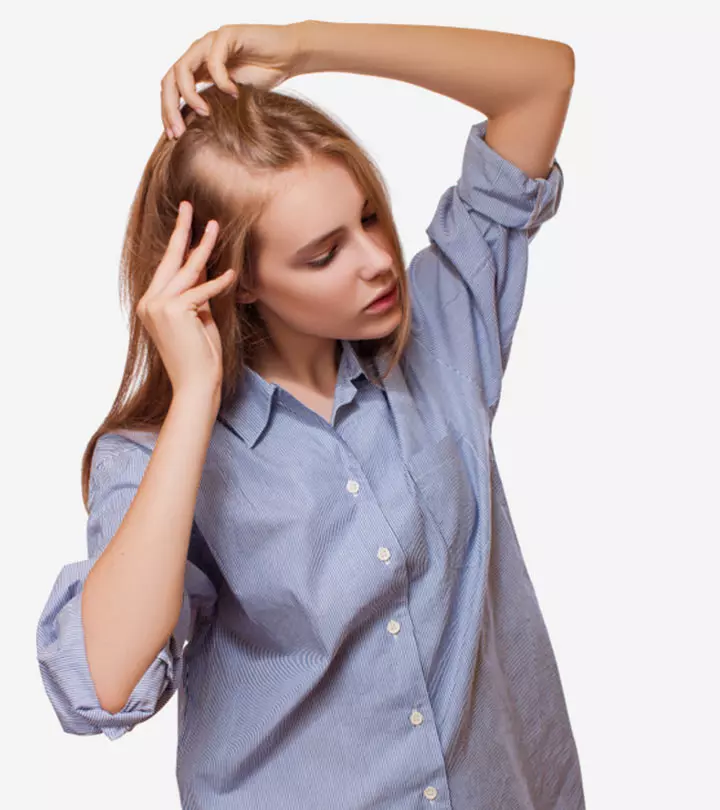
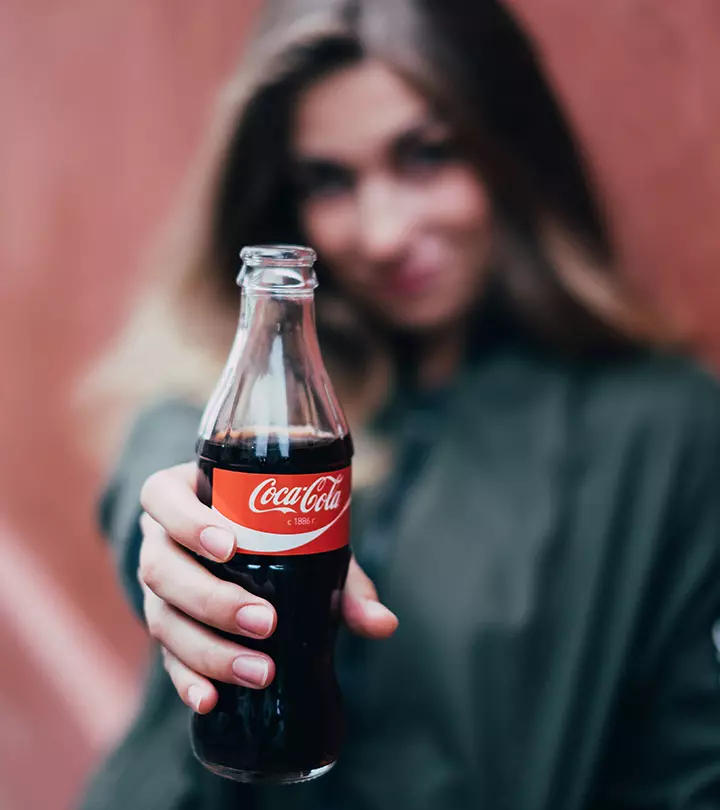

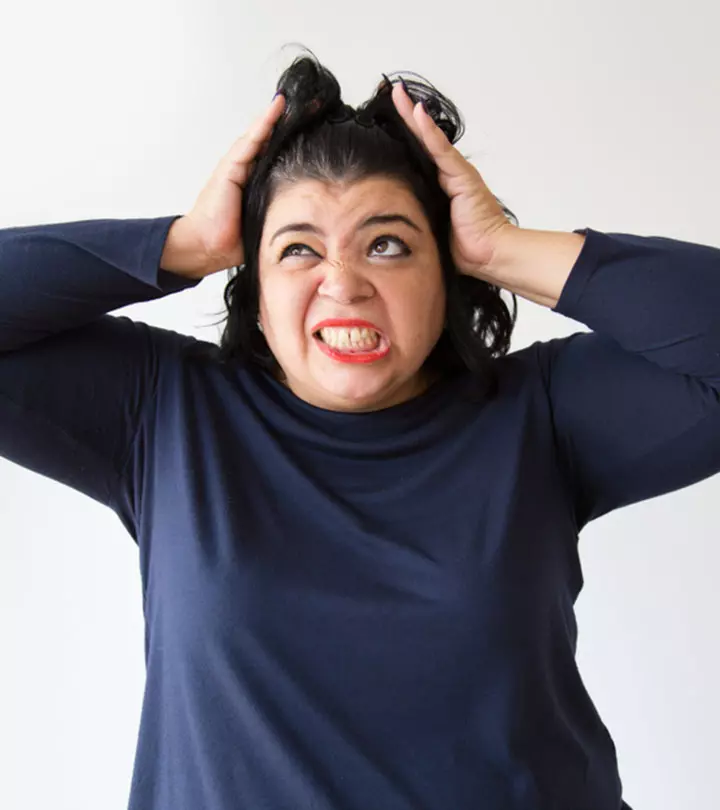
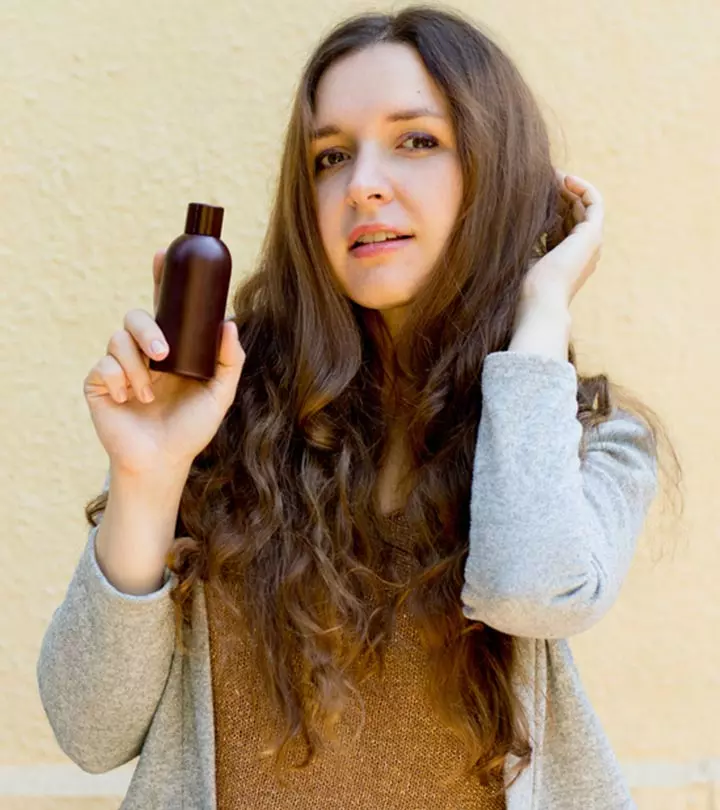

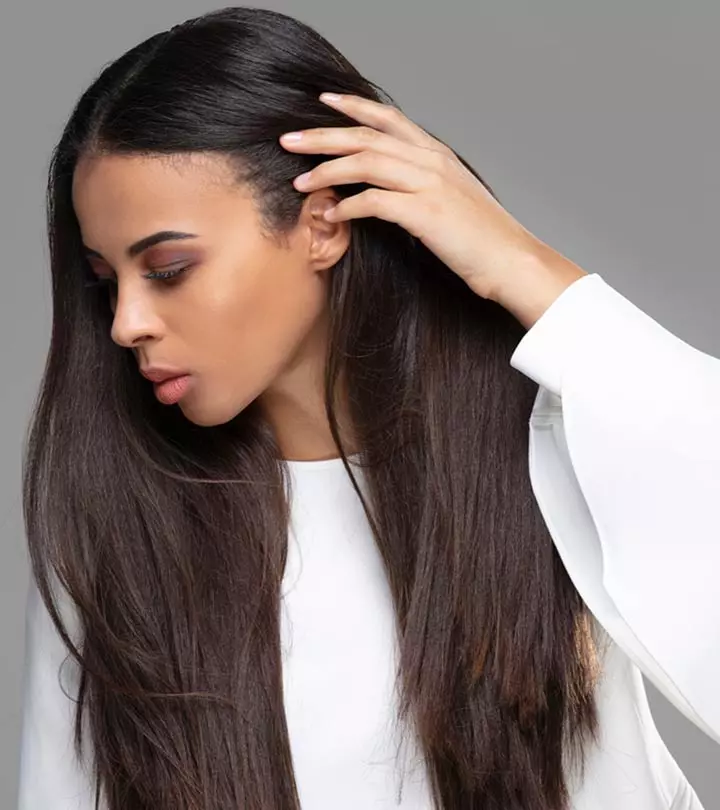
Community Experiences
Join the conversation and become a part of our empowering community! Share your stories, experiences, and insights to connect with other beauty, lifestyle, and health enthusiasts.